Setting up the SDK
Follow our setup guide to integrate the Reteno Plugin with your app.
Getting started with Reteno Plugin for iOS
- Install cordova-plugin-reteno using
cordova:
ionic cordova plugin add cordova-plugin-reteno- Install
firebaseplugin in application:
ionic cordova plugin add cordova-plugin-firebasex- Compile bundles to use Awesome Cordova Plugin for both plugins
[awesome-cordova-plugin-reteno] (https://github.com/reteno-com/reteno-cordova/tree/main/awesome-cordova-plugin-reteno) [awesome-cordova-plugin-reteno-firebase] https://github.com/reteno-com/reteno-cordova/tree/main/awesome-cordova-plugin-reteno-firebase)
npm run build- Add dependency into your project:
npm i <path>/awesome-cordova-plugin-reteno/dist/
npm i <path>/awesome-cordova-plugin-reteno-reteno/dist/Setting up SDK
Follow our setup guide to integrate the Reteno SDK with your app.
Step 1: Add iOS platform
ionic cordova platform add iosStep 2: Set up your Firebase application for Firebase Cloud Messaging:
-
Download your
google-services.jsonconfig file (see how here). -
Add the above file to your root
app/folder.
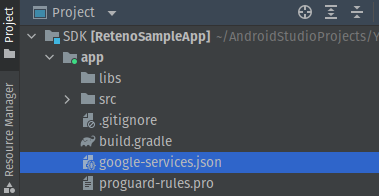
- Copy your FCM Server Key. In the Firebase console, click the gear icon next to Overview.
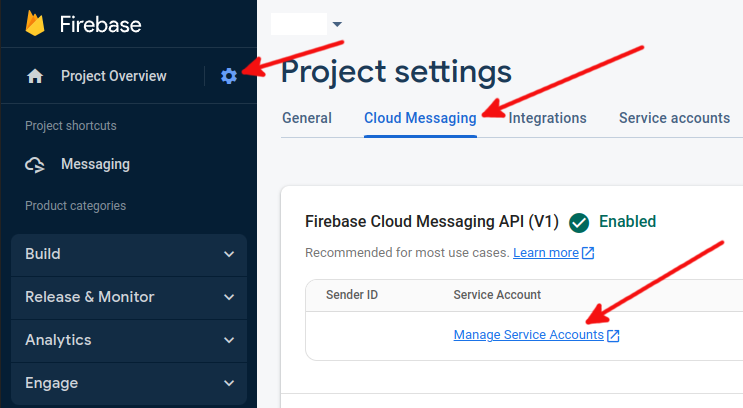
Then click Project Settings → Cloud Messaging → Manage Service Accounts.
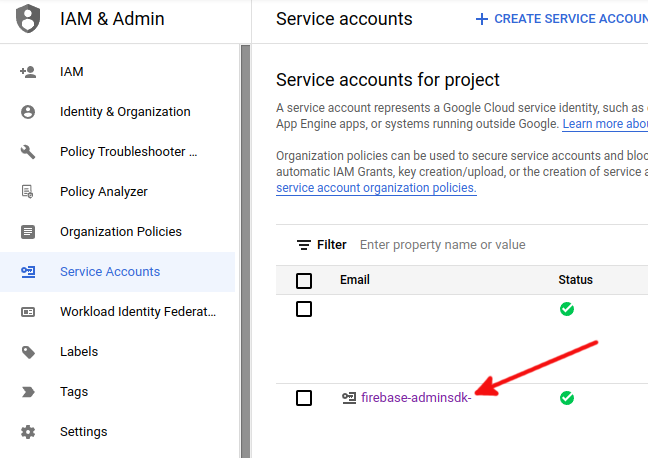
Go to Service accounts to download FirebaseAdminSdk account's json key.
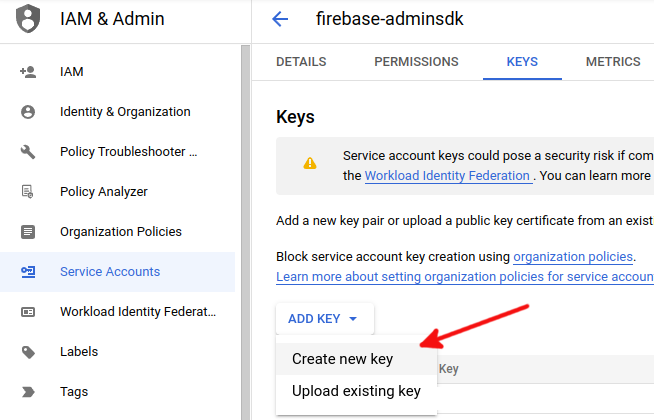
- Follow this manual to set up eSputnik admin panel with your Firebase key.
Now you are ready to run your app and send a marketing push notification to your application.
Step 3: Configure IOS project:
Create RetenoTransitionLayer.swift file; Go to your project in Xcode and create new swift file under your target; When system will ask if you want to create bridge file also, agree
After that put next code in your RetenoTransitionLayer.swift file:
import Foundation
import UIKit
import Reteno
@objc public class RetenoTransitionLayer: NSObject {
@objc class func setup(forApplication application: UIApplication) {
Reteno.start(apiKey: "SDK_API_KEY");
// Register for receiving push notifications
// registerForRemoteNotifications will show the native iOS notification permission prompt
// Provide UNAuthorizationOptions or use default
Reteno.userNotificationService.registerForRemoteNotifications(with: [.sound, .alert, .badge], application: application);
}
@objc class func processRemoteNotificationsToken(withDeviceToken token: Data) {
let tokenString = token.map { String(format: "%02.2hhx", $0) }.joined();
Reteno.userNotificationService.processRemoteNotificationsToken(tokenString);
}
@objc class func processRemoteNotificationsToken(withFCMToken fcmToken: String?) {
guard let fcmToken = fcmToken else { return }
Reteno.userNotificationService.processRemoteNotificationsToken(fcmToken);
}
}
Then go to AppDelegate.m and modify your code to contain RetenoTransitionLayer setup logic
#import "AppDelegate.h"
#import "MainViewController.h"
@implementation AppDelegate
- (BOOL)application:(UIApplication *)application didFinishLaunchingWithOptions:(NSDictionary<UIApplicationLaunchOptionsKey, id> *)launchOptions
{
self.viewController = [[MainViewController alloc] init];
[RetenoTransitionLayer setupForApplication:application];
return [super application:application didFinishLaunchingWithOptions:launchOptions];
}
@end
If you get an "Use of undeclared identifier 'RetenoTransitionLayer'" error here, it means that you need to create a Bridging header file yourself, here's how to do that:
In Xcode press File > New > File > Header File
Save it with YourProjectName-Bridging-Header.h name, make sure to replace YourProjectName with your ios Xcode project name, in our example project, the header was created manually as Bridging-Header.h, the ".h" extension will be put automatically.
Delete the contents of this file, and replace them with next imports:
#import <Cordova/CDV.h>Finally, you need to import this header in your AppDelegate header file (AppDelegate.h) as #import "ExampleIonic-Swift.h" (you should enter your file name)
#import "ExampleIonic-Swift.h"This is needed in order to use Objective-C and Swift files together in a single project.
You can read more about importing swift and bridging headers, react-native docs exporting swift section.
If you get an "No known class method for selector 'setupForApplication:'" error, or any other "No known class method for selector" error related to RetenoTransitionLayer:

You need to open your Project file, go to Build Settings, and in the search bar type: Swift Compiler and scroll down until you find Swift Compiler - General section.
There is a chance that your Objective-C Bridging Header might be empty, so you need to specify the name of the bridging header that you're using. Double click on the right side of this field, and enter the name of YOUR bridging header file, in our example project we will have Bridging-Header.h. Additionally you can check Objective-C Generated Interface Header Name which should be YourAppName-Swift.h, in our example project it's ExampleIonic-Swift.h.
And that's it, you should be good to go.
Step 4: Add a Notification Service Extension
The NotificationServiceExtension allows your iOS application to receive rich notifications with images. It's also required for Reteno's analytics features.
4.1 In Xcode Select File → New → Target...
4.2 Select Notification Service Extension then press Next.
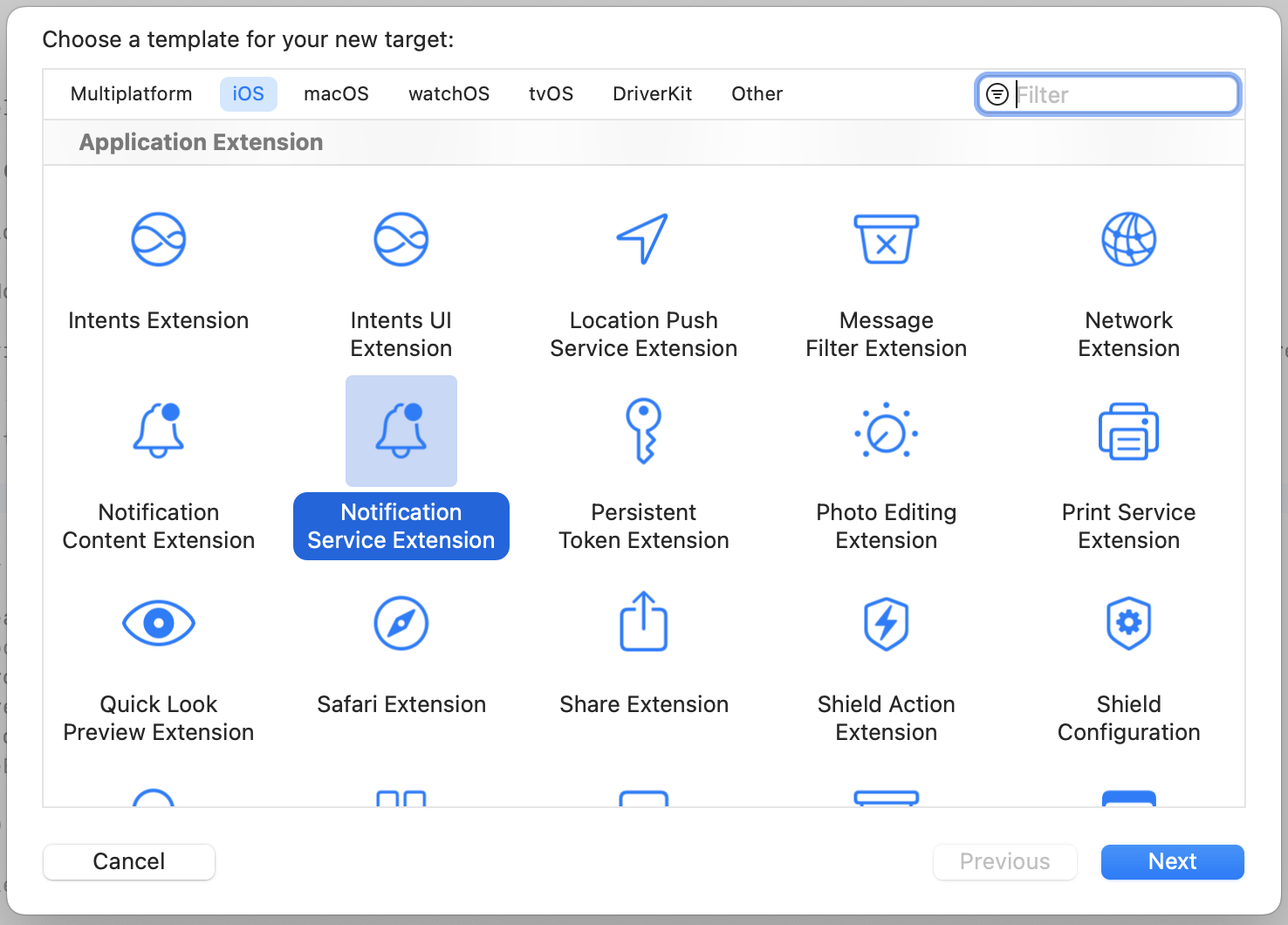
4.3 Enter the product name as NotificationServiceExtension and press Finish.
Do not select Activate on the dialog that is shown after selecting Finish.
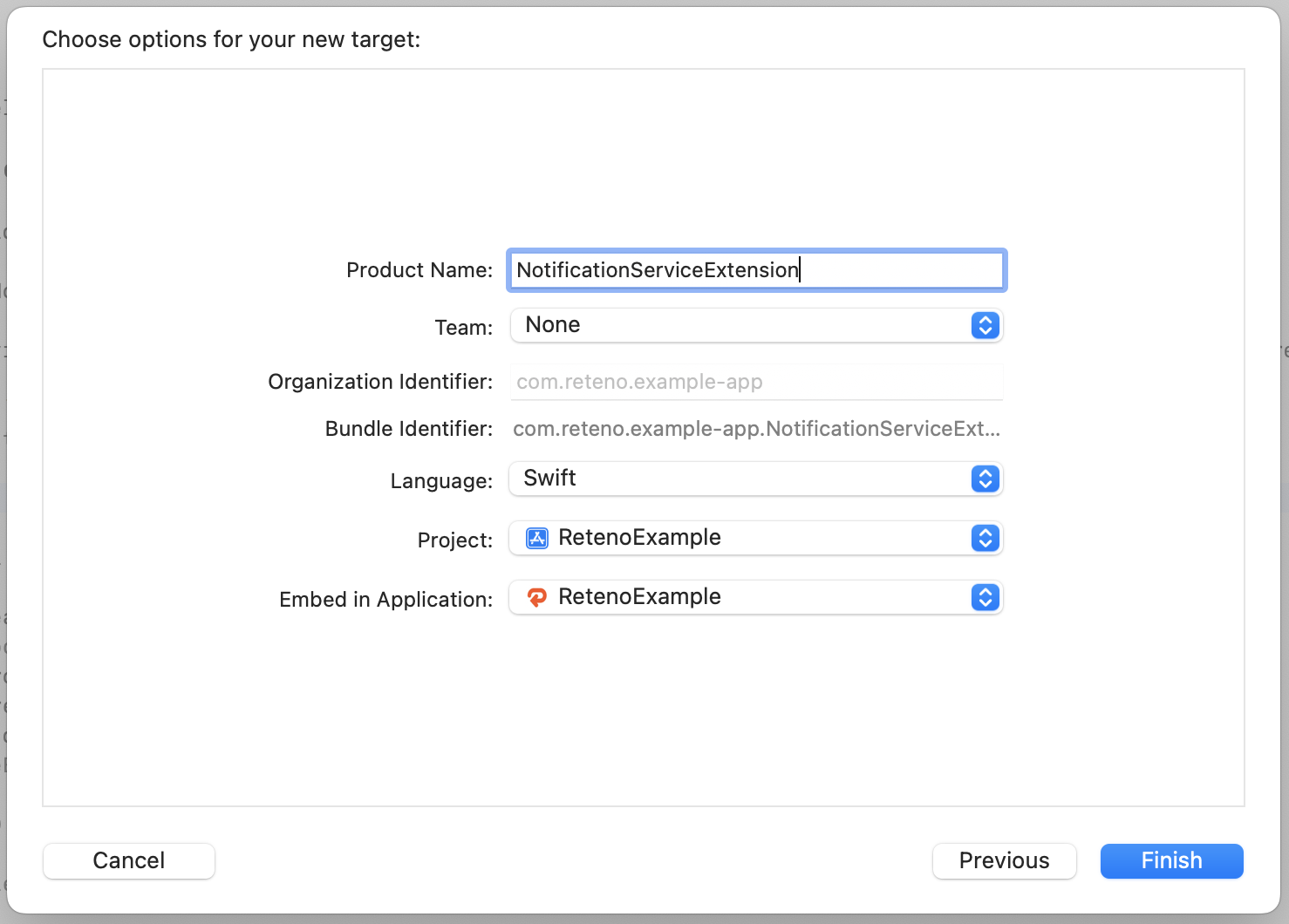
4.4 Press Cancel on the Activate scheme prompt.
By canceling, you keep Xcode debugging your app instead of the extension you’ve just created.
If you activate the prompt by accident, you can switch back to debugging your app in Xcode (next to the Play button).
4.5 In the project navigator, select the project directory and select the NotificationServiceExtension target in the targets list.
Check that the Deployment Target is set to the same value as your Main Application Target.
NoteiOS versions under 10 will not be able to get Rich Media.
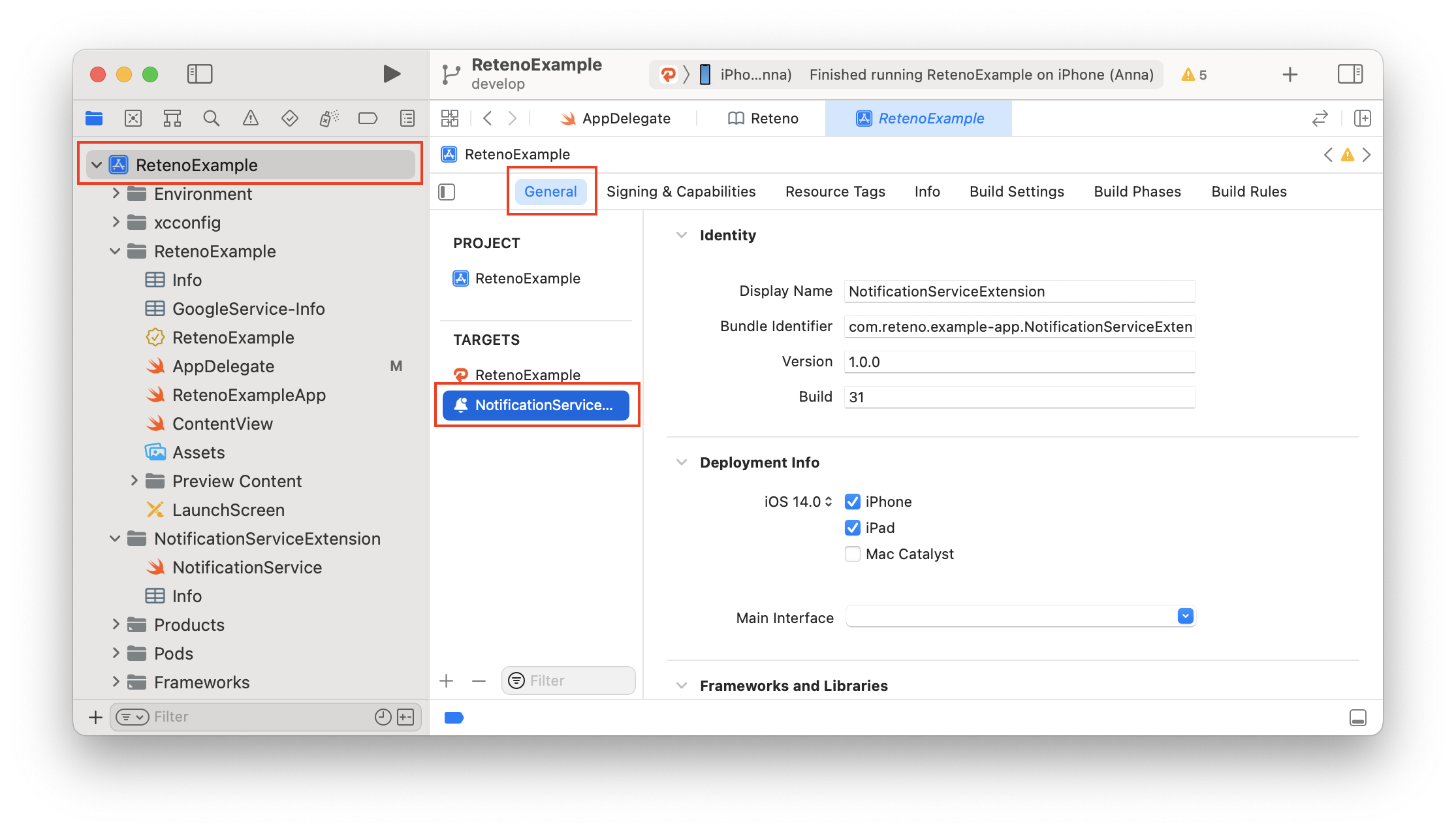
4.6 In the project navigator, select the NotificationServiceExtension folder and open the NotificationService.swift, then replace the entire file contents with the following code. Ignore any build errors at this point. We will import the Reteno module, which will resolve any errors.
import UserNotifications
import Reteno
class NotificationService: RetenoNotificationServiceExtension {}More about Notification Service Extension Modifying Content in Newly Delivered Notifications
Step 5: Add App Groups
5.1 In your Main app target got to Signing & Capabilities → All
5.2 Click + Capability if you do not have App Groups in your app yet.
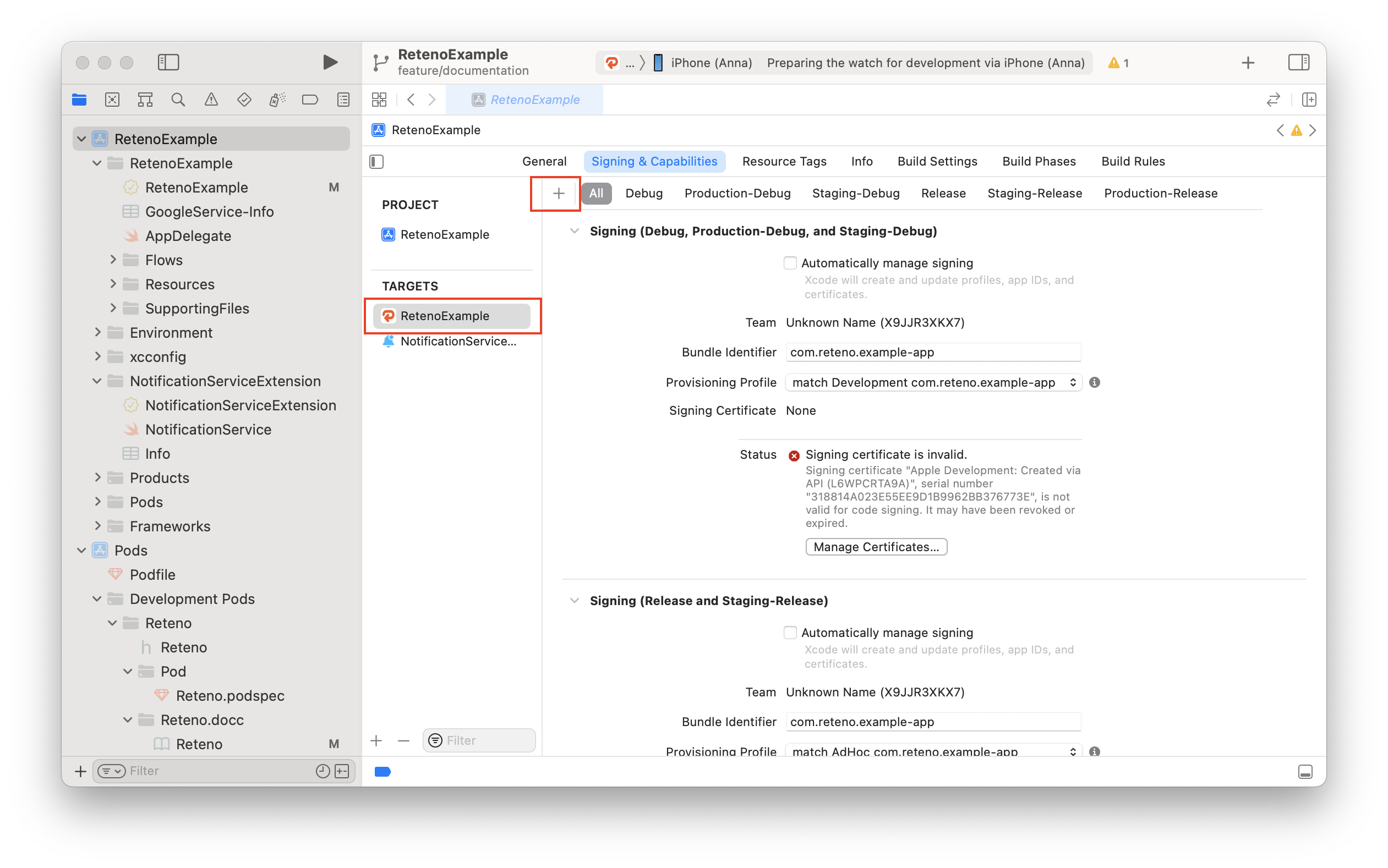
5.3 Select App Groups.
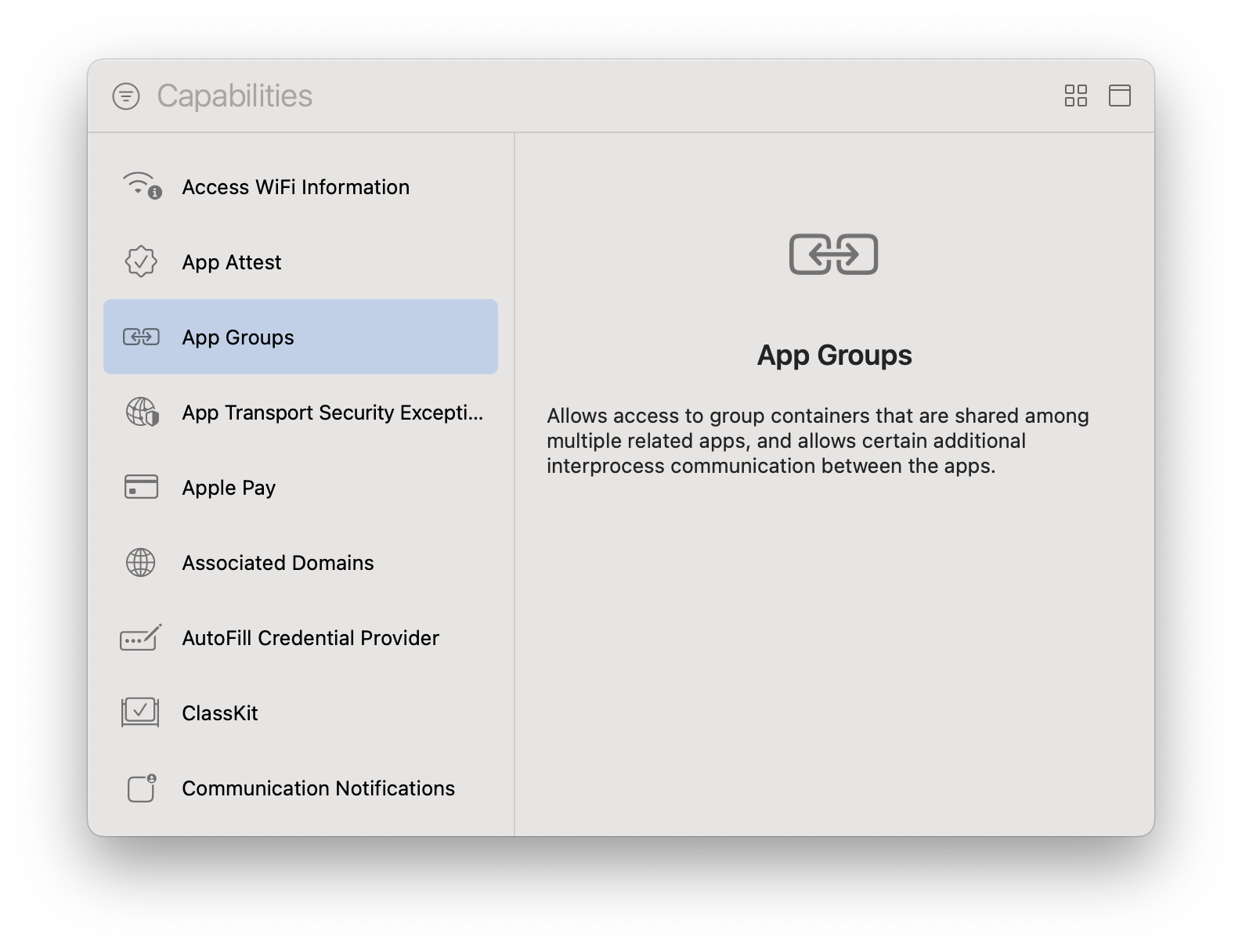
5.4 Under App Groups click the + button.
5.5 Fill the App Groups container as group.{bundle_id}.reteno-local-storage where bundle_id is the same as "Bundle Identifier" off your app (in the main target) and press OK.
5.6 In the NotificationServiceExtension target and repeat steps 5.2 - 5.5 for extension target
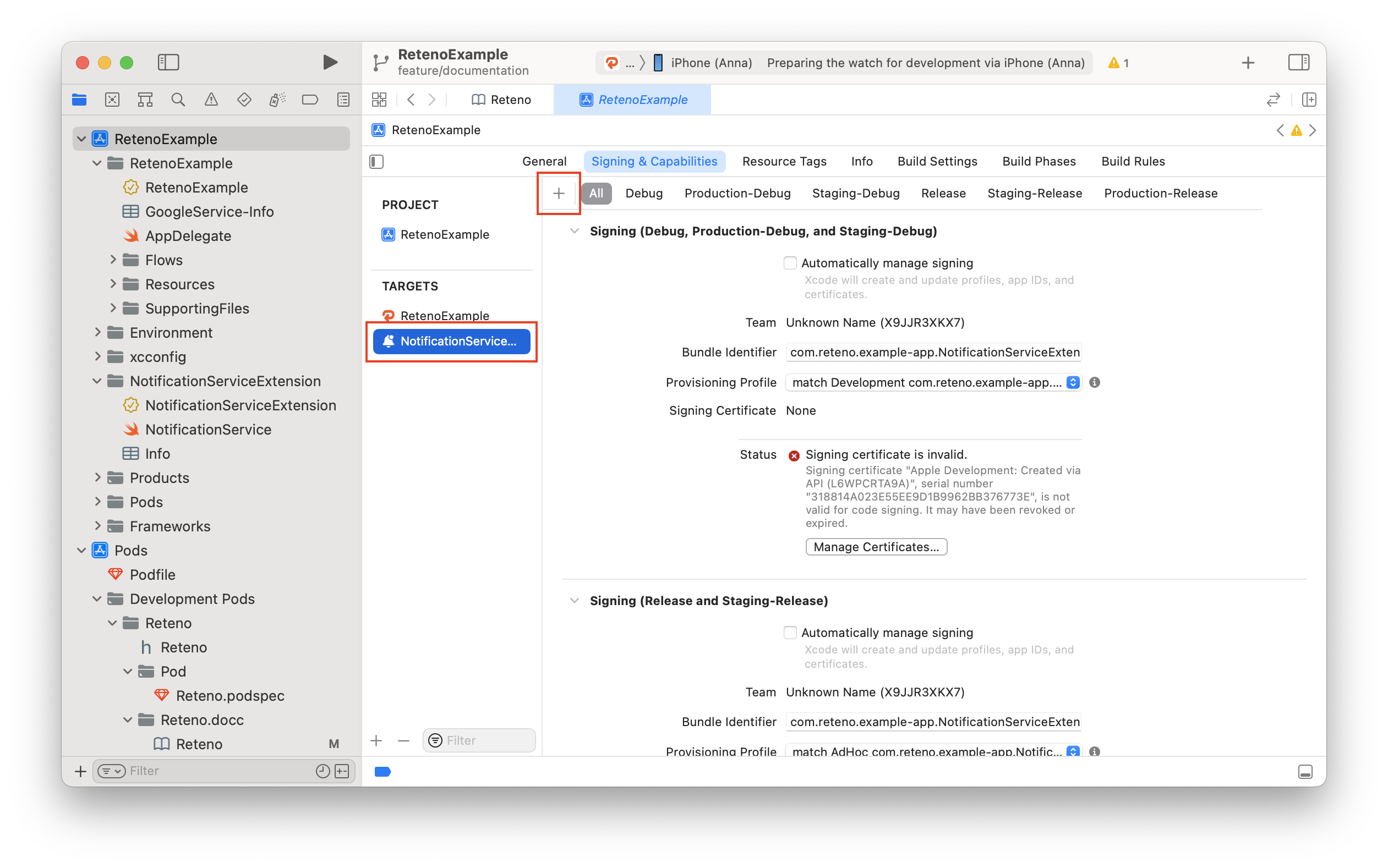
Note that group name structure should be group.{bundle_id}.reteno-local-storage where bundle_id is the same as your Main App target "Bundle Identifier". Do Not Include NotificationServiceExtension.
For more information visit Configuring App Groups
Step 6: Add Push Notification capability to your main app target (not NotificationServiceExtension!)
Push Notification capability to your main app target (not NotificationServiceExtension!)Step 7: Link development plugin folder (optional):
In case you have a local copy of Reteno Cordova Plugin, you may want to add it to the project, in order to be able to modify or debug it. If this is the case, you should remove the current plugin version from npm and add the local one. Provided that the plugin is located at the parent folder, this can be done as follows:
ionic cordova plugin remove cordova-plugin-reteno
ionic cordova plugin add --link <path_to_plugin_folder>/cordova-plugin-reteno/
ionic cordova plugin remove cordova-plugin-reteno-firebase
ionic cordova plugin add --link <path_to_plugin_folder>/cordova-plugin-reteno-firebase/So, config.xml file should contain one line like this:
<plugin name="cordova-plugin-reteno" spec="file:../cordova-plugin-reteno" />
<plugin name="cordova-plugin-reteno-firebase" spec="file:../cordova-plugin-reteno-firebase" />Step 8: Firebase usage
If you already use Firebase for Remote notifications or would like to use Firebase along with Reteno, you can use it as it is, because cordova-plugin-reteno-firebase provides Firebase support out of the box.
Run iOS version
- Run from command line:
ionic cordova run ios- Run from Xcode: Go to platforms/ios folder and open
Reteno Cordova Example.xcworkspace
NoteiOS Debug Mode enables you to ensure that all events and user properties are logged correctly.